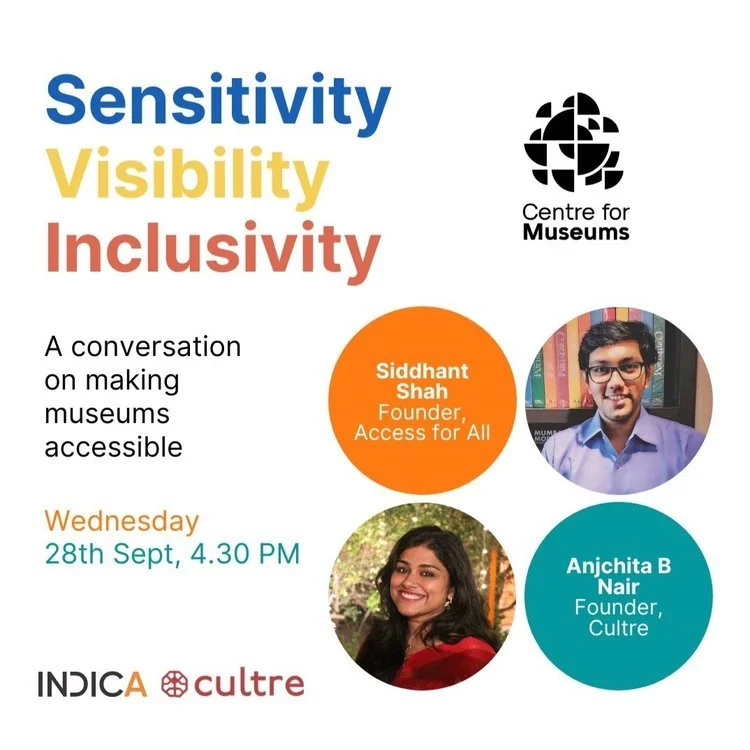Sensitivity, Visibility, Inclusivity: A conversation on making museums accessible with Siddhant Shah
Accessibility and inclusion are topics of ever-increasing importance in the museum and cultural heritage sector in India. However, not all heritage sites and museums are accessible. In this scenario comes Siddhant Shah, an accessibility expert and founder of Access for ALL, who addressed a number of issues about accessibility in his recent talk titled Sensitivity, Visibility, Inclusivity. He shared his personal and professional experience and shed light on the efforts and strategies to make Indian museums accessible and inclusive.
The five key takeaways from the talk are:
Understanding disabilities: Shah emphasised that we must educate ourselves about disability issues that go beyond physical disabilities. Disabilities are not limited to sensory impairments but also include learning and emotional disabilities and even temporary disabilities. Understanding disabilities will allow museums to respond to shifting challenges and take imperative action towards the people with disabilities.
Sensitisation of museum: In the museum’s space sensitisation has to start from the ground level of janitors to the curators and other stakeholders in the museum, as it can help them to sensitively interact with PwD and understand their needs. While discussing this, he questioned why there are no museums in India that offer the post of museum accessibility officers?
Building inclusive workspaces: He not only emphasised raising awareness or bringing attitudinal and behavioural change towards them, but also stressed on the importance of employing people with different disabilities. This will help ensure accessibility issues are identified and hiring staff with PwD will allow diversity and inclusiveness into the museum space.
Digital Accessibility: Moving to digital accessibility is another important aspect in today’s time. He highlighted how there are only a few websites and social media spaces that are created in an accessible manner keeping in mind the font size and colour, audio for the website or even turning on the descriptions on the Instagram posts. He also suggested due consultation with PwD regarding the digital material. Apart from it being user-friendly, the words that are used must be accessible. For instance, sentence formation like: ‘as you can see’ might lead to hurt the sentiments of the person who is physically disabled.
Attention towards accessibility in cultural spaces: The power of culture allows us to be ourselves, through creative expressions. However, in a country like India, there is a lack of facilitating accessible infrastructures with proper signs boards in braille with proper colour or even construction of ramps. There is also unavailability of live assistance and intermediaries, including guides, readers and professional sign language interpreters. Attention is required towards making cultural spaces accessible. The keynote takeaway from the talk is that accessibility and inclusion of culture and heritage is the right of every citizen in our country.
His initiative, Access for ALL has been working towards pushing the boundaries of physical, intellectual, and social access through innovative, indigenous design and advocacy while fostering an inclusive experiential culture. They have tailored various programs and created tactile artworks, braille books, content in various accessible languages, and digital content for various museums, galleries and art festivals around India.
Know more about their work at https://www.accessforall.co/

